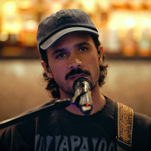Paper Clips

With no Jews, no Catholics, one Hispanic and five African-Americans, the Protestant town of Whitwell, Tenn. (pop: 1,600) isn’t exactly renowned for its diversity. In fact, as a Southern enclave located uncomfortably close to the birthplace of the Ku Klux Klan and the 1925 Scopes Monkey Trial, Whitwell regularly faces biases of its own. So when a group of middle-school students chose to study the Holocaust, it was with a definite sense of their limitations. In an attempt to comprehend the incomprehensible, the students decided to collect six million paper clips —one for every person murdered—as a visual symbol of what happened during WWII. They chose paper clips because they were practical and because they had been worn by Norwegians during the war as a sign of silent protest.
With the help of two German journalists whose contacts led to crucial national publicity for the project, the paper clips began to pour in from around the world. Just weeks after a Washington Post article and a segment on World News Tonight, the students had received 24 million paper clips in some 25,000 pieces of mail, each attached to a story.
-

-

-

-

-

-

-

-

-

-

-

-

-

-

-

-

-

-

-

-

-

-

-

-

-

-

-

-

-

-

-

-

-

-

-

-

-

-

-

-








































